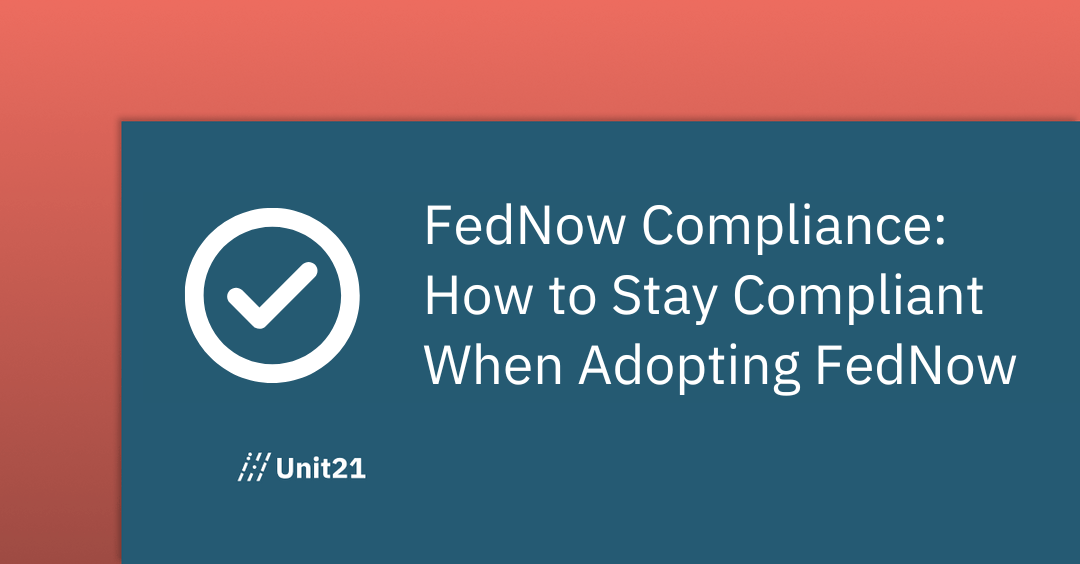

Almost all teams can benefit from a risk and compliance infrastructure that helps them improve their anti-fraud and anti-money laundering operations.
That being said, not every solution will be a good fit for your organization—as each organization faces its own types of fraud and experiences different pain points. Here at Unit21, we pride ourselves on combining fraud and AML operations into a seamless system that makes it easy for risk and compliance teams to do their jobs faster, with less friction, and simply put—better.
Below, we look at the 3 main signs that indicate that Unit21 is a great fit for your organization:
When you tackle the right problems and provide teams with the right solution, you’ll empower risk and compliance teams to reduce false positives, mitigate fraud losses, and maintain AML compliance.
A major problem for risk and compliance teams is the level of control they have over rule creation and their ability to actually update these rules fast enough to keep pace with fraudsters. Solutions built in-house often rely on scattered, internal rulesets that fail to catch new fraud schemes effectively.
Teams need more efficiency from a rules perspective, but they are struggling to achieve this because they lack the ability to make the changes and updates they want in the timeframe they need to. In many cases, engineering resources are already strapped, and rule creation and management only increases their workload, draining resources even more.
There are two types of companies that can benefit most from this flexibility with rule creation: companies that have a lot of internal rules already running, but lack an efficient way of managing these rules, leading to a misuse of resources; and companies that are getting hit with a lot of fraud they were unable to anticipate—and are therefore unequipped to handle.
The root problem (for both) is that the team doesn’t have direct access to edit existing rules or create new ones, forcing them to request engineering resources for every change. These requests get placed in a queue, which takes time to actually process. If your team is already strapped, they may not get to these updates soon.
In the meantime, your organization is still getting hit with fraud—fraud that you have no way of effectively detecting or preventing. Even with sufficient engineering resources and the ability of risk professionals to create and manage rules themselves (reducing the actual burden on resources), organizations can still struggle if they are overwhelmed with unexpected fraud they can’t defend against.
To combat this, teams need to analyze behavior, devise rules that address these threats, and then implement them—but it doesn’t end there. Teams must iterate on these rules repeatedly to refine and perfect them. Until your team can get it right, fraud losses—and false positives—will run rampant.
Unit21’s Flexible, No-Code Infrastructure Empowers Teams to Create and Optimize Rules
With Unit21, risk and compliance teams can build rules for various scenarios—including high transaction values, high transaction velocities, or high-risk jurisdictions—that help teams detect fraud or money laundering without the use of valuable engineering resources.
This puts risk and compliance teams in the driver’s seat, allowing them to easily and quickly customize and configure specific rules and catch more bad actors. With out-of-the-box rulesets that can be tailored to your needs, you can easily set up rules that will help your organization manage fraud and AML threats effectively.
Unit21 customer DriveWealth has been able to significantly improve processes using our customizable, no-code interface.
“Unit21 was head-and-shoulders above any of the solutions we looked at. The ability to use the no-code natural language interface to customize processes and automation to our business needs has been a big win.” - Matt DiGiacobbe, Chief AML Officer, DriveWealth
Investigations can be inefficient for many reasons, but it typically boils down to two main factors—investigations take too long per case, or they are ineffective, resulting in a low success rate. Regardless of the reason, inefficient investigations are a serious problem for risk and compliance teams.
Investigating cases can be extremely cumbersome for risk professionals—especially if they rely on outdated systems with poor data visualizations. Long investigation times clog up your team's time, and can even lead to a backlog of cases—which means you’re always (at least) one step behind the fraudsters. This leaves teams with the inability to draw fruitful insights from investigations and easily make a decision on a case.
To overcome this problem, organizations must improve efficiency, reduce investigation times, and limit the number of false positives. Ideally, the less time risk professionals spend on rudimentary tasks and false positives, the more time they have to investigate the things that truly matter.
How Unit21 Helps Streamline Investigations
Unit21’s Case Management software is for teams that need to perform detailed investigations where it’s important to understand links among users or when it’s vital for teams to easily visualize all aspects of a case in a manner that can be readily digested. Features like link analysis and transaction and activity analysis give teams the ability to easily visualize data in a meaningful way—and then use these data visualizations to make fast, effective decisions on a case.
Alert Scoring is crucial for workflow management, helping risk teams prioritize and delegate cases effectively. Teams can easily manage the queue of cases and make sure cases are escalated to the right team member for investigation. Alerts are also prioritized based on risk—allowing you to mitigate the biggest threats fastest. Machine learning helps the system steadily improve itself, providing more accurate (and valuable) alert scores over time.
Machine learning also streamlines workflows by making case management easier. Workflow buttons can be applied to alerts, allowing teams to train future rules more efficiently. Over time, the alert scoring model will improve, resulting in better results and increased productivity.
But not all cases are complete after the investigation—another core component of the case management process is regulatory reporting. For compliance-focused teams, Suspicious Activity Reports (SARs) need to be filed for each incident, which can be extremely time-consuming for compliance teams. Automated and streamlined SAR filing saves teams valuable time—and allows them to spend more time actually investigating cases.
But that’s not all, reporting is also a valuable tool for assessing risks and improving processes. Unit21 also offers reporting on team performance, data, and alerts so teams can analyze their performance and invest in the best improvements.
Unit21 is designed to make investigation easy and smooth for analysts, while still allowing them to perform a detailed, rigorous investigation into the user’s behavior. With a unified dashboard that gives the analyst information at their fingertips and enhanced analysis features like network analysis, Unit21 is an ideal tool for fraud analysts to use when investigating suspicious activity.
We know what investigators need to make a decision on a case—our objective is to present all that information in the best way for risk professionals to do their job.
After implementing Unit21, Lili Bank was able to reduce investigation times by 75%.
“With Unit21, I can export the data I need to so I can have the metrics to make an analysis within minutes, not months.” - Alex Faivusovich, Previous Fraud Prevention Manager at Lili
For many organizations, data is siloed—different pieces of information exist in different places, and sometimes even different systems. The result—and main problem—is that data is incomplete and hard to access, making it extremely difficult for teams to have a clear (or accurate) picture of the threats they face.
Instead, companies should rely on solutions like Unit21 that centralize data into one system, eliminating data silos. Consolidating data into a single system helps with both rules and case management objectives by empowering the risk and compliance team to improve efficiency in both areas.
Get a 360-Degree View of Your Data Within Unit21
With customer data and third-party signals ingested into Unit21, risk teams can create complex rules that actually prevent the fraud your organization is dealing with. The more signals you have at your disposal, the more clearly you can define your rules during creation. Teams can even centralize work and develop a seamless queue system that optimizes workflows.
Unit21 allows teams to ingest data into a single place so it can be analyzed faster, easier, and more effectively. With all of your data in a single location, teams can run detailed, structured, compliance investigations that deliver meaningful results.
Customer’s like C2FO are using Unit21 to build data-driven Risk & Compliance Programs.
“One thing I love about Unit21 is the relational database nature of the product. In other solutions, you can’t typically see a true 360-degree view of the user like you can in Unit21. The way that entities (users or businesses), events and transactions are connected (and further, the way Unit21 surfaces this information on the dashboard) makes it much easier to have confidence during alert reviews.” - Phil Bess, Senior Manager of Card Operations, C2FO
Data is no longer scattered across multiple places—causing teams to tab in and out of windows to try to develop a clear picture of the situation. Investigators no longer have to pull together information ad-hoc from a variety of tools, instead getting clean, easy-to-understand data visualizations of information that empower teams to make decisions faster and more effectively. Analysts can even identify risks they may otherwise miss.
When to Use Unit21 for Risk and Compliance
Ultimately, Unit21’s risk and compliance infrastructure is best suited for teams that want to improve operational efficiency, cutting down on workflow management so that more time can be spent on investigations. With a unified, easy-to-use dashboard, analysts and investigators have all the information they need to take action on a case. Seamless workflow management allows teams to pass cases on to a specialist better suited to handle that case.
Any organization with siloed or scattered data, the desire to reduce investigation times, and a drive to enhance case management efforts would benefit from using Unit21’s risk and compliance software.
Schedule a demo today to learn how Unit21 can help your team optimize workflows, saving time and improving work quality.
Subscribe to our Blog!
Please fill out the form below:







